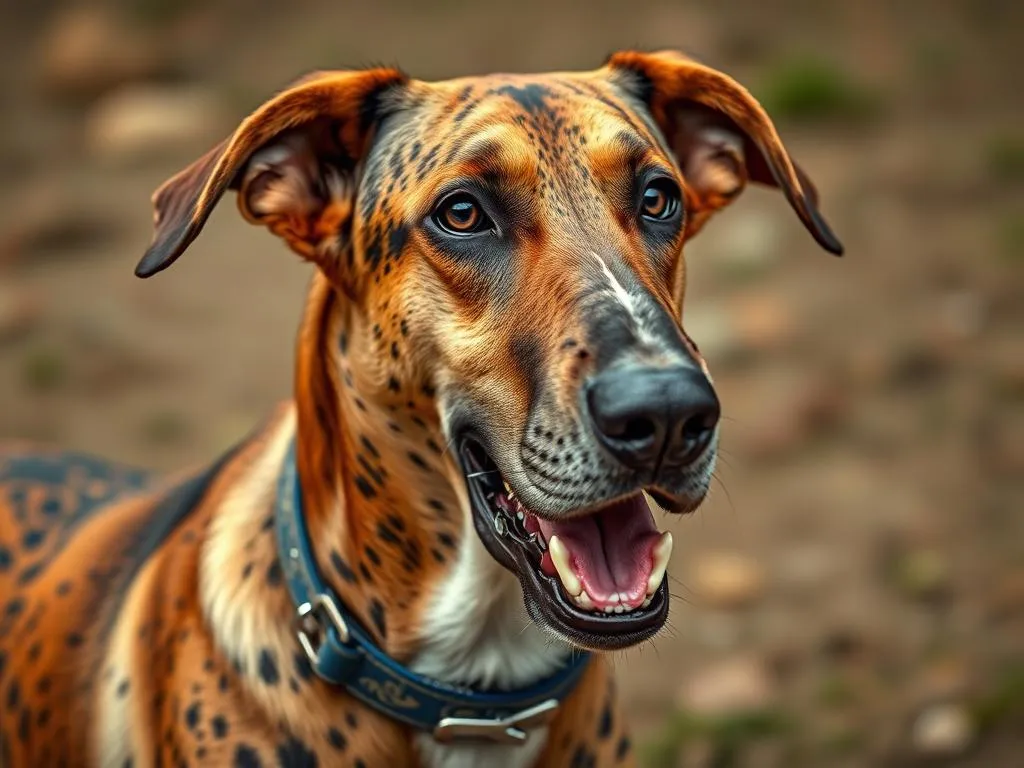
Introduction
Understanding dog breeds is essential for anyone considering bringing a dog into their life. A dog breed is a specific group of canines with distinct characteristics, traits, and behaviors that have been refined through selective breeding. This understanding allows potential dog owners to choose a breed that aligns with their lifestyle, preferences, and needs.
One breed that stands out in the vast world of canine companions is the Greek Hound. This breed is not only an excellent representation of its historical roots but also illustrates the importance of different breeds in our society. Recognizing the unique attributes of the Greek Hound can enhance our appreciation for the diversity among dog breeds.
Understanding Dog Breeds
Definition of Dog Breeds
A dog breed is classified based on specific genetic traits that have been passed down through generations. These traits can include physical characteristics, such as size and coat type, along with behavioral tendencies. Understanding these classifications helps potential owners anticipate the care and training needs of their chosen breed.
History of Dog Breeding
The history of dog breeding dates back thousands of years, beginning with the domestication of wolves. Initially, early humans selectively bred these animals for traits that suited their needs, such as hunting, herding, or companionship. Over time, this selective breeding led to the emergence of various breeds, each developed for specific functions or environment adaptations.
Why Different Breeds Exist
Different breeds exist primarily due to purpose-driven breeding practices. For example, some dogs are bred to work alongside humans in roles such as hunting, herding, or guarding, while others are bred for companionship. Additionally, breeds can adapt to various environments, which influences their physical and behavioral traits, making them unique and suited to particular roles.
The Greek Hound: A Closer Look
History and Origins
The Greek Hound has a rich history that dates back to ancient Greece, where it was revered for its hunting abilities. These dogs were often depicted in classical art and literature, showcasing their significance in Greek culture and mythology. They were originally bred for hunting game and were known for their speed, agility, and keen sense of smell.
Physical Characteristics
The Greek Hound is a medium-sized dog, typically weighing between 40 to 60 pounds. They have a sleek, athletic build, which contributes to their impressive speed. Their coat is short and can come in various colors, such as white, fawn, brindle, or a combination of these. One of the breed’s distinctive traits is its long, elegant ears and expressive eyes, which give it an acute sense of hearing and vision. The Greek Hound stands approximately 20 to 28 inches tall at the shoulder, and its overall appearance exudes grace and athleticism.
Temperament and Behavior
The temperament of the Greek Hound is one of its most appealing qualities. They are known to be friendly, loyal, and intelligent, making them excellent companions. This breed generally gets along well with children and other pets when properly socialized. However, they can exhibit a strong prey drive due to their hunting background, so early training and socialization are crucial.
Training a Greek Hound requires patience and consistency. They respond well to positive reinforcement methods, and their intelligence makes them eager to learn. However, their independent nature can sometimes pose a challenge, so it’s essential for owners to establish themselves as confident and consistent leaders.
Health and Care for the Greek Hound
Common Health Issues
Like all breeds, the Greek Hound can be predisposed to certain health issues. Some common ailments include hip dysplasia, ear infections, and eye conditions. Regular veterinary check-ups can help monitor their health and catch potential issues early. The average lifespan of a Greek Hound is around 12 to 15 years, and preventive care strategies, such as vaccinations and dental care, are vital for their longevity.
Nutritional Needs
Providing a balanced diet is crucial for the health of a Greek Hound. A high-quality dog food that meets their nutritional requirements is essential, especially given their active nature. Owners should consult with a veterinarian to determine the best diet based on the dog’s age, weight, and activity level. It’s also important to monitor their food intake to prevent obesity, as this breed can be prone to weight gain if not exercised appropriately.
Exercise Requirements
The Greek Hound is an active breed that requires regular exercise to maintain its physical and mental well-being. Daily walks, playtime, and engaging activities are essential to keep them happy and healthy. Ideally, they should have at least 60 minutes of exercise each day, which can include running, playing fetch, or participating in dog sports. Their high energy levels make them well-suited for active families or individuals who enjoy outdoor activities.
Greek Hound vs. Other Breeds
Comparison with Similar Breeds
When comparing the Greek Hound to similar breeds, such as the Whippet or the Basset Hound, several differences emerge. While the Whippet shares similar speed and agility, it is generally smaller and has a different coat texture. On the other hand, the Basset Hound is known for its laid-back temperament and longer body, which contrasts with the athletic build of the Greek Hound.
Unique Benefits of Owning a Greek Hound
Owning a Greek Hound comes with unique benefits. Their loyalty and companionship make them excellent family pets, and their playful nature can be a source of joy for households with children. Additionally, they adapt well to various living situations, whether in apartments or homes with yards, as long as they receive the exercise they require.
Training Tips for Greek Hound Owners
Basic Training Techniques
Early socialization and training are essential for a well-adjusted Greek Hound. Positive reinforcement methods, such as treats and praise, are effective in encouraging desired behaviors. Basic commands like sit, stay, and come should be taught from a young age to establish good habits. Consistency is key; owners should practice commands regularly to reinforce learning.
Advanced Training and Activities
For those looking to engage their Greek Hound further, advanced training opportunities are abundant. Agility training and dog sports can provide both physical and mental stimulation, enhancing the bond between owner and dog. Additionally, interactive toys and games that challenge their problem-solving abilities can keep them entertained and happy.
Conclusion
The Greek Hound is a remarkable breed with a rich history and distinct characteristics that set it apart from others. Understanding its needs, temperament, and unique qualities can help potential dog owners make informed decisions. Choosing the right breed is a significant commitment, and further research into breeds like the Greek Hound can lead to a fulfilling companionship with a loyal and loving canine friend. The Greek Hound undoubtedly holds a special place in the tapestry of dog breeds, showcasing the diversity and beauty of our canine companions.









